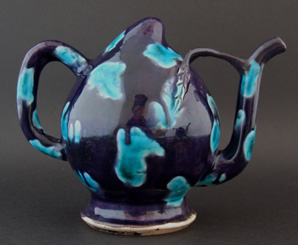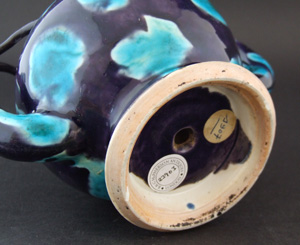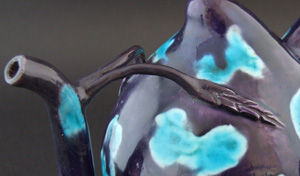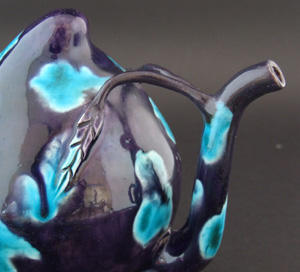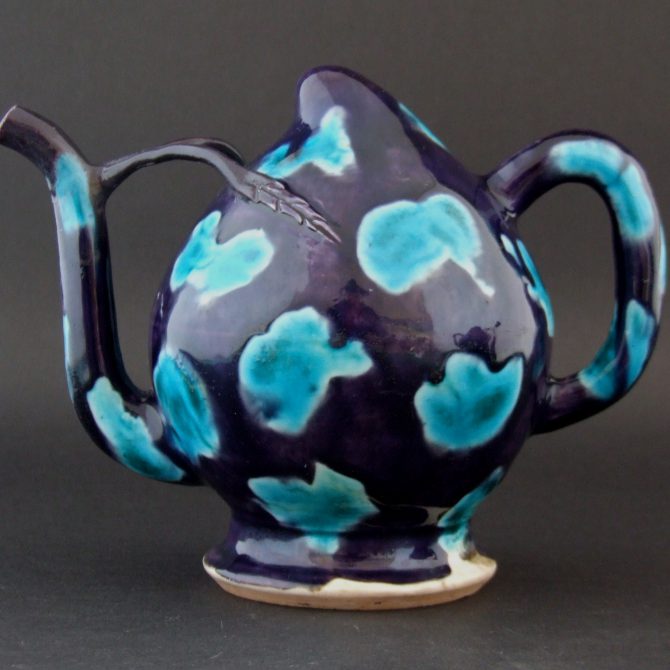
KANGXI to QIANLONG c.1710 – 1740 Chinese Biscuit Glazed Porcelain
A Rare Early 18th Century Biscuit Glazed Peach-Shaped `Cadogan` Wine Ewer. The Peach Shaped Form with a Branch Like Spout with a Stem Shaped Bracket Dividing and then Terminating on the Body with Two Leaves. The Recessed Base with a Central Aperture. The Unglazed Footrim with Iron-Red Markings Due to Iron-Oxide Migrating to the Surface During Firing.
SOLD
- Condition
- Both branch shaped brackets restored, the end of the spout restored.
- Size
- Height : 15 cm (6 inches)
- Provenance
- A Private European Collection of Chinese Porcelain.
- Stock number
- 23903
Information
Cadogan Wine Ewers :
These peach form winepots were a Chinese novelty meant to be a puzzling curiosity to a gathering of people who were sharing the wine. It appears there is no way to fill the ewer as there is no aperture on top, it seams impossible to fill it from the hole beneath as it would run straight out. So how was it filled ? There is a funnel in the base, so when the pot is righted the liquid stays inside. The later name, Cadogan, refers to teapots made in Europe, as well as the original Chinese wine. It is said that William Cadogan, 1st Earl Cadogan (1675 – 1726), was the first person to own a Chinese winepot of this shape, hence the name. In England the Cadogan teapot was particularly popular in the second quarter of the 19th century.
Coloured Glazed Biscuit Porcelain :
Chinese porcelain with a clear turquoise, green or aubergine glaze over a biscuit body was exported to Europe from the Kangxi period (1662-1722) onwards. The brightly colour with a clear shiny glaze was like nothing produced in Europe at the time. Monochrome glazed Chinese export porcelain was especially popular in France during the 18th century and to this day many pieces can be found in French private collections. French taste in the second quarter of the 18th century tired of Chinese blue and white porcelain, indeed by this time France was producing it`s own blue and white porcelain at St.Cloud among other factories. Collectors like the duc d`Aumont had a large collection of monochrome Chinese porcelain, with celadons as a favourite. They were sometimes made more French by the addition of ormolu mounts, 43 % of his collection had mounts.
